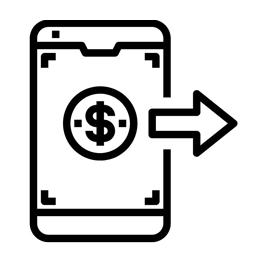The Complete Guide to Wire Transfers
A wire transfer is a method of electronically transferring funds from one bank or financial institution to another. It’s commonly used for domestic and international money transfers when speed and security are important. To help you understand the process, here is a complete guide to wire transfers:
-
Understand the Basics:
- Wire Transfer Definition: A wire transfer is a transaction that moves funds electronically from one account to another.
- Types of Wire Transfers: Domestic wire transfers (within the same country) and international wire transfers (between different countries).
- Wire Transfer Fees: Banks and financial institutions may charge fees for sending or receiving wire transfers. Fees can vary, so check with your bank for specific details.
-
Gather Necessary Information:
- Recipient’s Information: Obtain the recipient’s full name, bank account number, and the bank’s name, address, and SWIFT/BIC code (for international transfers).
- Your Information: Provide your full name, account number, and any additional information required by your bank.
-
Choose a Wire Transfer Service Provider:
- Banks: Most banks offer wire transfer services. Contact your bank to inquire about their wire transfer process, fees, and required documentation.
- Non-Bank Money Transfer Providers: There are also non-bank financial institutions that specialize in money transfers, such as Western Union, MoneyGram, or online platforms like TransferWise (now known as Wise). Research the options and compare fees, exchange rates, and delivery methods.
-
Initiate the Wire Transfer:
- Visit Your Bank or Use an Online Platform: Depending on your chosen provider, you can initiate the wire transfer either by visiting a bank branch or using an online platform.
- Complete the Required Forms: Fill out the wire transfer request form, providing the necessary details about the recipient, your account, and the amount you wish to transfer.
- Review and Verify Information: Double-check all information for accuracy, ensuring the recipient’s details match exactly with their bank account information.
- Authorization and Confirmation: Sign the wire transfer request form and authorize the transfer. The bank or service provider will provide you with a confirmation or receipt.
-
Track the Wire Transfer:
- Request Confirmation: Ask for a confirmation number or receipt from your bank or service provider. This will serve as proof of the transaction.
- Monitor the Transfer: Keep track of the wire transfer progress, and if necessary, contact your bank or service provider for updates.
- Delivery Time: Domestic wire transfers usually take a few hours to complete, while international transfers may take a few business days, depending on the destination country and correspondent bank.
-
Inform the Recipient:
- Advise the recipient of the wire transfer and provide them with any necessary details, such as the expected delivery date or reference number.
By following this guide, you’ll have a better understanding of how wire transfers work and how to initiate them. Remember to consult with your specific bank or wire transfer service provider for their procedures, requirements, and any additional considerations.
Send Money
The future of financial transactions and many more all at your fingertips.
Data Protection
RemitM is registered with the Information Commissioner’s Office (ICO), the UK’s independent authority set up to uphold information rights in the public interest.
You can visit the ICO website to learn more about data protection or search the ICO register to view details of Remitm’s registration (Registration Number: ZA526026)
Client Funds
All clients’ funds are held in a dedicated client account separate from RemitM’s funds, in line with our regulatory framework and consistent with good practice.
We earn no interest from holding client funds, as your payments and transfers are not held by us and are remitted to recipients upon receipt.
Online Security
Your data is transmitted in a secure way and all password data is encrypted.



